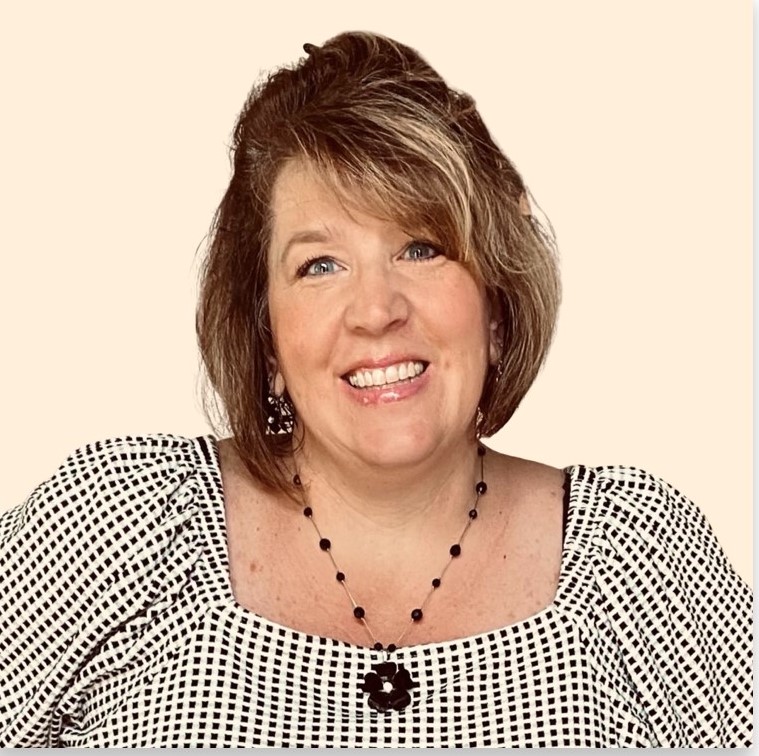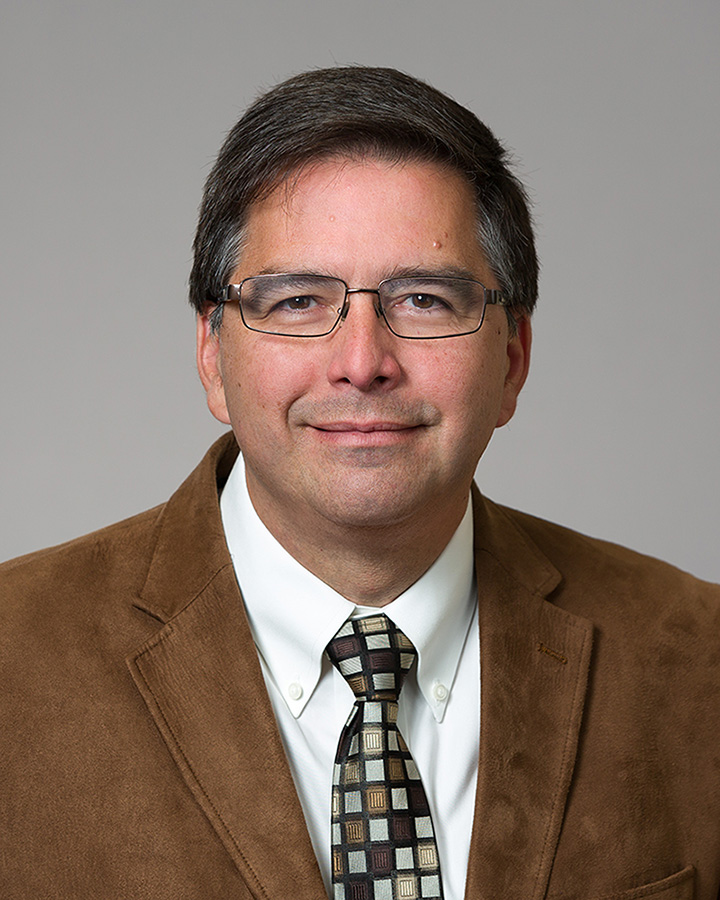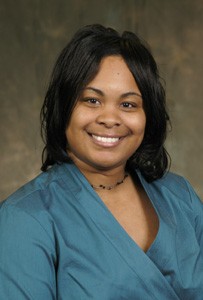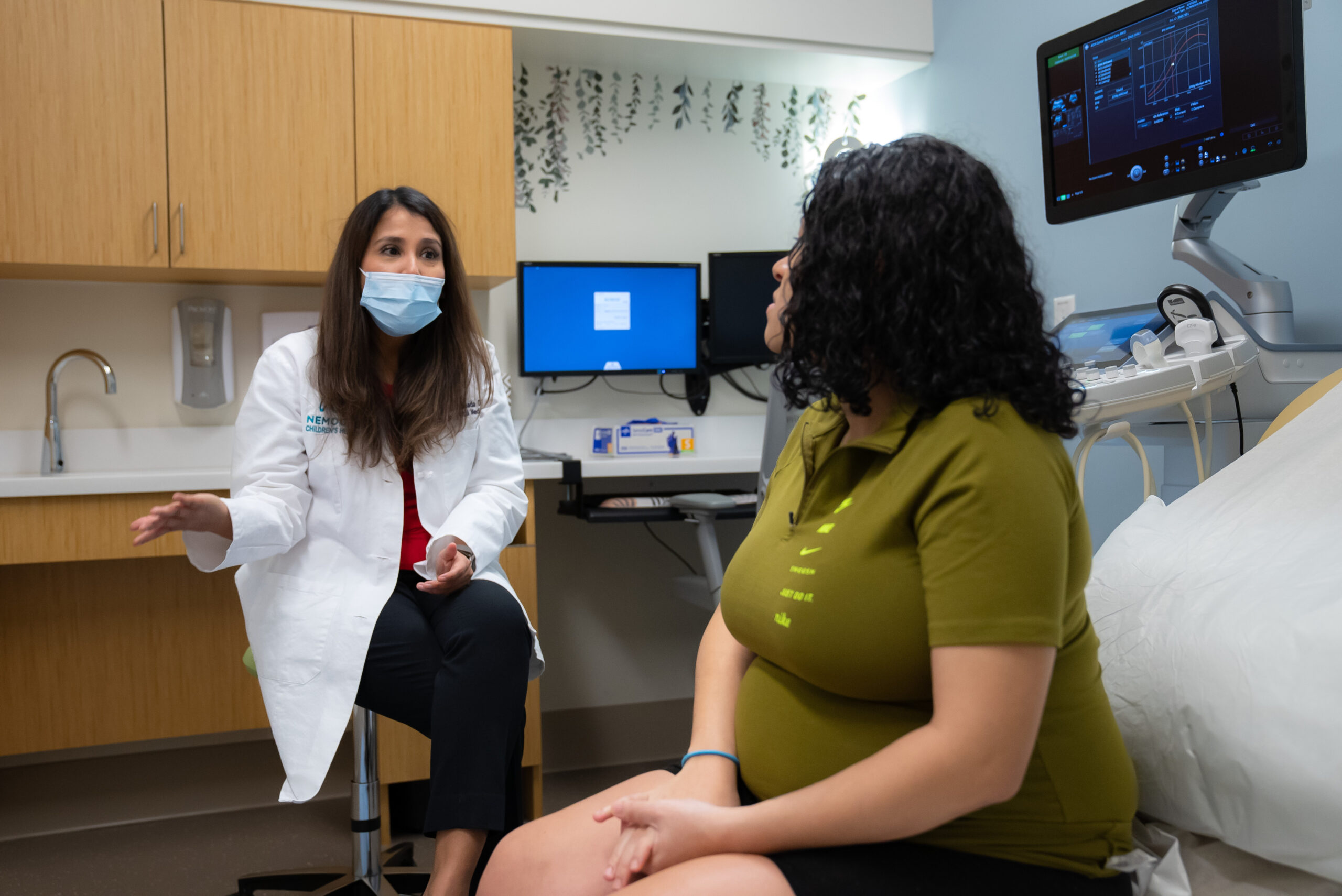
Nemours Children’s Health Goes Beyond Medicine to Cure Families’ Social Needs
Nemours Children’s Health knows healthcare is more than just medicine.
The conditions in which we are born, grow, live, work, and age – known as social determinants of health (SDoH) – can greatly help or harm our health.
That is why Nemours gave multiple leaders, including Kelli Thompson, director of population health management; Na-Tasha Williams, population health specialist; and Alex Koster, senior director of the value-based care data analytics and IT department; the space to begin developing a SDoH screening program in 2018.
The SDoH screening program is now fully implemented or being piloted in multiple Nemours locations, including in Delaware, Pennsylvania, and Florida.
To screen patients for social needs, such as food and housing insecurity, Nemours uses an electronic questionnaire. If a patient screens positive for social needs, they are either supported within the practice or referred to community resources for help.
Let’s explore how Nemours created and implemented their SDoH screening program, how clinicians are using it, and how patients are benefiting.
Planning for SDoH Screening
In recent years, Nemours has started shifting to value-based healthcare, Thompson said.

Value-based healthcare is a healthcare model in which providers, including hospitals and doctors, are paid based on patient health outcomes and quality of care, rather than volume. Providers are rewarded for helping patients improve their health, reduce the effects and incidence of disease, and live healthier lives.
Nemours wanted to start SDoH screening as a part of its value-based care effort.
SDoH screening is on the rise in healthcare systems across the US. The aim is to go beyond clinical care, which accounts for just 20% of patient health outcomes, and identify and address social needs.
Social needs – such as low wages, unstable housing, unreliable transportation, and lack of healthy food options – are at the root of health issues like obesity, diabetes, and certain cancers. These issues are especially prevalent among Latinos and other people of color.
Thompson, Williams, and Koster knew it would take teamwork to start SDoH screening at Nemours.
With a budget allocated to deploy a system that would support the SDoH screening process, a multidisciplinary team across Nemours’ various locations formed and began collaborating on the effort in 2018.
Project team members belonged to the Nemours’ office of health equity and inclusion and several departments, including primary care operations, population health management, value-based care data analytics and IT, and medical management.
In addition, the group added stakeholders from research, social work, and more to review proposed questions to include in the screening tool. Key roles represented included physicians, nurses, social workers, data analysts, care coordinators, population health specialists, and more.
Capturing Patient Needs in SDoH Screening
While the Nemours’ patient population varies by location, the children’s healthcare system provides services to many low-income and Medicaid patients. In fact, in 2022, Nemours saw approximately 67,000 Medicaid and CHIP patients at Delaware facilities.

With these demographics in mind, the multidisciplinary team lead by Koster identified SDoH screening questions that would best capture patient social needs.
“In late 2018 there were no widely adopted pediatric SDoH screening tools we could reference as a guide,” Koster said. “Instead, our team looked at other screening tools already in existence and determined what questions would be most effective for our pediatric population.”
The group also selected questions with the recognition that children could fill out the questionnaire on their own as they got older. Therefore, it was vital for questions to be appropriate and written in clear, simple language.
Agreeing upon the questions and creating the screening tool took the team about nine months of research and collaboration.
During the nine months, the SDoH screening questions were piloted in a few locations with patients, families, and Nemours staff providing feedback for improvement.
“We asked them, ‘Does this screening process feel right? Does it feel comfortable? And do the questions make sense?’” Thompson said.
According to Koster, a lot of time was also spent debating about how many questions should be included in the screening tool, and how specific the questions should be. The team didn’t want the screening process to take too much time and disrupt natural workflows.
The Nemours’ team was given full power to make edits of the questions as needed – which was challenging at times. But piloting the questions in a real pediatric healthcare setting helped the team pinpoint the most effective questions for identifying patients’ social needs.
In fact, Thompson explained two SDoH screening questions proved vital for building trust between patients, families, and providers. These questions helped patients feel respected through the screening process – whether they accepted or declined help with addressing social needs.
“The two vital questions are an opening and closing question that recognize the sensitivity of the questions we are asking,” Thompson said. “The very first screening question is, ‘Are you willing to answer these questions?’ If that family says no, we respect that. A year later, they’ll be asked to complete the screening again, and maybe something has changed in that time. But we honor whatever the family or caregivers answer in the meantime.”
“At the end of the screening process, the final question is, ‘For any areas that you screened positive for needing help, are you interested in receiving help?’ Some families get to this question and think, ‘Yes, I shared with you my areas of need, but I don’t need help.’ Others say, ‘Yes, I want help.’”
“Those two questions have remained intact through the screening program’s development. They have been challenged at times as ‘extra questions’ that can be removed, but we haven’t removed them from the screening process because they provide sensitivity to the screening process for the families and promote a level of trust between them and the Nemours team.”
Building Community Resources for SDoH Screening
But creating the screening questionnaire is just one task in developing a SDoH screening program.

Before a program can be implemented, healthcare teams must make connections with community-based organizations – such as food banks, homeless shelters, and transportation agencies – that can help address patients’ social needs through a referral system.
Making these connections can take some time, especially when a healthcare system, like Nemours, has multiple locations nationwide.
But Nemours was “very fortunate to work with community organizations on a regular basis anyway,” Williams said. “Nemours is very well respected and seen as a great partner to collaborate with, so that definitely made it easier for us to partner with community organizations in various locations.”
Piloting the SDoH Screening Program
After drafting the screening questions and establishing community connections, the Nemours team’s next step was to test the screening workflow in the healthcare setting.
A big part of testing the workflow was deciding how and when the screening would take place.
For instance, would the patient be screened before or during their medical appointment? Could the screening be completed through software systems already in use at Nemours? Should screening questions and community resources be translated into Spanish?
Another important consideration was how to train staff to identify and act on patients’ social needs in a respectful way.
Williams and her program workgroup were well on their way to addressing these concerns when COVID-19 swept the country in March 2020.
“We were in the middle of piloting the program when COVID-19 hit, so we were then forced to pivot and move our timeline for implementation up rather quickly,” Williams said. “We knew that families would need our support even more during the pandemic.”
While altering the implementation timeline was certainly a challenge, it gave Williams and her program workgroup further insight into the implementation process. They learned to adapt as patient social needs and the urgency of addressing those needs changed during the pandemic.
“I think with any pilot, you start off thinking things will go one way, and they don’t,” Williams said reflecting on the piloting process.
Ultimately, Nemours began offering screening in advance of medical appointments to help patients, families, and caregivers feel more comfortable answering potentially sensitive questions. Completing the screening on a computer at the doctor’s office remains an option, but the preferred method is to complete it ahead of time in the Nemours app.
Screening questions and results were integrated into Nemours’ electronic medical records system to keep patient data all in one place.
Materials were translated based on the preferred languages reported by patients and families.
Staff, including nurses, physicians, and patient service representatives, participated in various screening process discussions and trainings.
Overall, the program took about 2.5 years to develop and operationalize in a healthcare setting.
“And we continue to learn and grow every day!” Thompson said.
SDoH Screening Program Success
Despite the pandemic’s added challenges, Nemours’ SDoH screening program has successfully addressed patients’ social needs since 2020.

For example, Williams is proud of the screening program’s recent role in addressing transportation disparities among Delaware’s patients who are wheelchair-bound.
“From information gathered through our screening program, we realized that a lot of the issues around transportation were specifically for patients who are wheelchair-bound,” Williams said. “We were able to work with the state department of transportation to start registering our patients that are wheelchair-bound for Delaware’s paratransit system services.”
Other major social needs identified through the screening process was the lack of affordable and accessible internet, food, and housing.
“When patients expressed needing help with finding affordable internet access, we were able to provide them with a few options to either reduce their existing costs or work with local schools and libraries to locate free Wi-Fi connectivity,” Thompson said.
“If their needs were food-related, we connected them with the local food bank or events where food would be dispersed in their neighborhood. While housing needs are a bit more challenging for a health system to address, we have begun piloting a medical-legal partnership in a couple of our primary care practices. This will give families with housing needs, such as mold remediation or landlord-tenant issues, an opportunity to access legal services to help them resolve their needs.”
Future Goals for SDoH Screening
Currently, SDoH screening is happening in all 20 of Nemours’ Delaware Valley primary care practices, which includes practices in Pennsylvania.
A select number of inpatient units in Nemours’ Florida hospital are also offering SDoH screening, and a few Florida primary care practices are currently in the piloting phase of implementing a screening program.

While SDoH screening is primarily taking place in primary care settings, Nemours has its sights set on administering regular screenings in specialty departments, including the emergency department.
Another future goal is establishing what Thompson calls a “tiered escalation process,” which would help patients get additional information for assistance if they screen positive for social needs.
This process may involve organizing a virtual resource hub, because the reality is, “we are not going to be able to financially afford deploying care coordinators or social workers, who connect patients to resources, in every department across Nemours,” Thompson said.
However, Nemours recognizes that a virtual resource hub is not accessible for all patients, and some patients will still need personal assistance in addressing social needs. So, “we definitely need to have the right professionals identified to answer questions,” Thompson said.
The team is also working on plans to create a “closed loop referral system,” which is a standard process for tracking what happens to a patient after they’re referred to a community resource.
“What happens after a referral is really important for us to know,” Thompson said. “If we’re referring patients somewhere where they just aren’t getting the support they need, we need to know so we can improve our system.”
Currently, about 35% of patients who screen positive for at least one social need say they want a referral to community resources.
Nemours hopes to increase this percentage of referrals through future program improvements, but ultimately, “it really just depends on what the patients need,” Thompson said.
“Every effort is done in the best interest of the patients.”
Lessons Learned on SDoH Screening
While Nemours’ SDoH screening program has certainly helped many patients thus far, leaders like Thompson, Koster, and Williams are still learning new things every day.
Developing a screening program requires significant investment in time and training of clinicians and staff.
Both Williams and Thompson emphasized that everyone, from executive leadership to clinicians and staff, must be on board to successfully operationalize a SDoH screening program.
“Commitment to the mission needs to be clearly expressed from executive leadership,” Williams said. “This helps with program implementation and limiting pushback.”
“It’s really important to know that this can’t operationalize overnight,” Thompson added. “It’s much easier to operationalize a screening program when you have primary care and clinical staff on board and have them engaged from the beginning.”
Additionally, Thompson emphasized that clinicians and staff must be aware of their own implicit bias to avoid making assumptions about patients and families.
Sometimes, a family may “appear to have it all together, but they really need help,” Thompson said.
Lastly, Williams stressed the importance of ensuring the facility’s infrastructure can adequately support the screening program. Resources should be readily available for patients who screen positive for social needs and the screenings must be administered respectfully.
“Families need to feel that the support is genuine,” Williams said.
The post Nemours Children’s Health Goes Beyond Medicine to Cure Families’ Social Needs appeared first on Salud America.

